So Many DC to DC Charger Options, So Little Time...Which One is BEST for Your System?
WHY CHOOSE A DC TO DC BATTERY CHARGER?
If you have an engine that drives, pulls, pushes, or otherwise moves your mobile house around, then you have a built-in way to charge up your house/service/auxiliary batteries even if you’re already connected to solar power. Many tow-behind RVs already use something like this, but unfortunately the small trickle charge coming from the engine compartment on the vehicle in front just isn’t enough to do the job effectively. Many vans and motorhomes have battery isolators which try to do the job as well, but miss out on the opportunity to integrate solar into a true multi-source battery charging plan. No matter what time of day you’re driving, or whatever the weather throws at you, there are different types of DC to DC chargers will keep the lights on and the fridge running!
HOW DOES IT WORK?
While driving, the alternator acts like a small generator that charges the starting battery and keeps your electronics running in your vehicle (e.g., stereo, fan, compressor, windows, door locks, etc.). A DC to DC battery charger 12v takes advantage of this charging current, boosts it like a pump, and sends it to a service/house/auxiliary deep cycle battery. This allows you to recharge your RV/van battery while driving down the road to your favorite campground, national park, or friend’s house.
Whether you are installing a DC to DC charger to charge the house battery in your RV or you are using it to charge an auxiliary battery in your truck, SUV, or van to run a 12V refrigerator, there are a number of considerations when choosing the right style and size for your application. In this blog, we discuss the various size (amperage) options within both the standard DC to DC charger and the Dual Input DC to DC charger to help you decide what’s best for your system.
STANDARD DC TO DC CHARGER
A standard DC to DC Charger (Available in 20A, 40A, 60A) is perfect, if you:
- Drive a lot and want to take advantage of the boost in charging current coming from your alternator to charge your house battery.
- Already have a Folding Solar Suitcase panel with built-in charge controller that you use while camping, and want to take advantage of the boost in charging current from your alternator to charge your house battery while driving.
- Live or travel in a region (or season) with low sun availability, so taking advantage of an extra boost in charging current from your alternator would facilitate longer boondocking sessions.
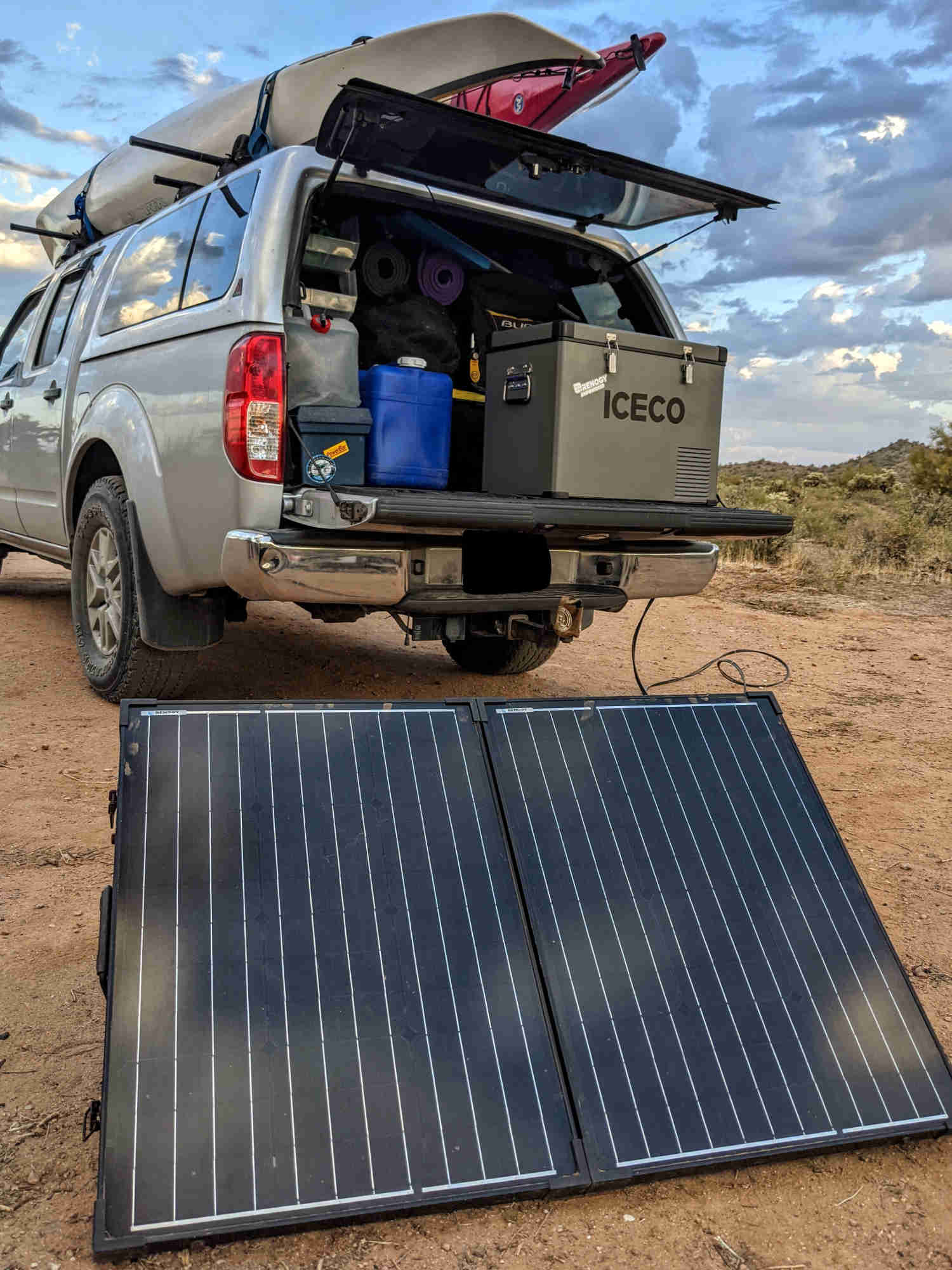
WHICH DC TO DC CHARGER IS BEST FOR YOUR SYSTEM?
By doing just a bit of research, you can take the guesswork out of which charger size you should use for your system. Check the specifications from the manufacturer of your deep cycle house/service/auxiliary battery (not your starting battery) to find the “maximum charging current” of that battery. For example, let’s say you have 2 x 12V Renogy 100Ah AGM batteries with a maximum charging current for each battery at 30A. If they are connected in parallel (rather than in series) the charge currents are added together (30A + 30A = 60A), so you should purchase the 60A DC to DC Charger. If you connect these same batteries in series, you double the voltage (12V + 12V = 24V), but the maximum charging current remains the same at 30A. So, purchasing the40A modelof this charger works in this second situation.
But, if you have invested in a 100Ah Smart Lithium Iron Phosphate (LFP) battery with a maximum charging current of 50A, you can use the 60A model of the charger to take full advantage of the battery’s charging potential. In this scenario it would be okay to go over the rated charge current maximum because the battery management system (BMS) can regulate the charging current to fit its needs.Once you know the maximum charging current of the battery you have or intend to purchase, check the chart below to find which size best suits your system.
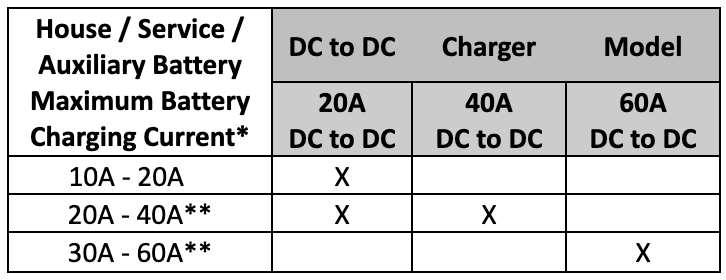
**Check battery manufacturer specifications, as all deep cycle batteries have different maximum charging currents and are not standard.
**Consider purchasing the larger model charger if your battery’s maximum charging current is 50% of the specific charger’s limit and you want to add a 2nd battery in the future. Be sure to size your cable gauge appropriately to handle any future upgrade.
WHERE AND HOW TO INSTALL A DC TO DC CHARGER
This unit is typically installed in your towing vehicle, or for motorhomes/vans, in the vehicle itself. For an example of how to install in your towing vehicle, check out our video. Note: By installing Anderson Connectors (for easy connect and disconnect) from the DC to DC Charger to the battery using the appropriate gauge of wire for the distance, rather than going through the 7-way plug (as we did in the video), you will get the FULL benefit of this charger! We made this change after producing the video.
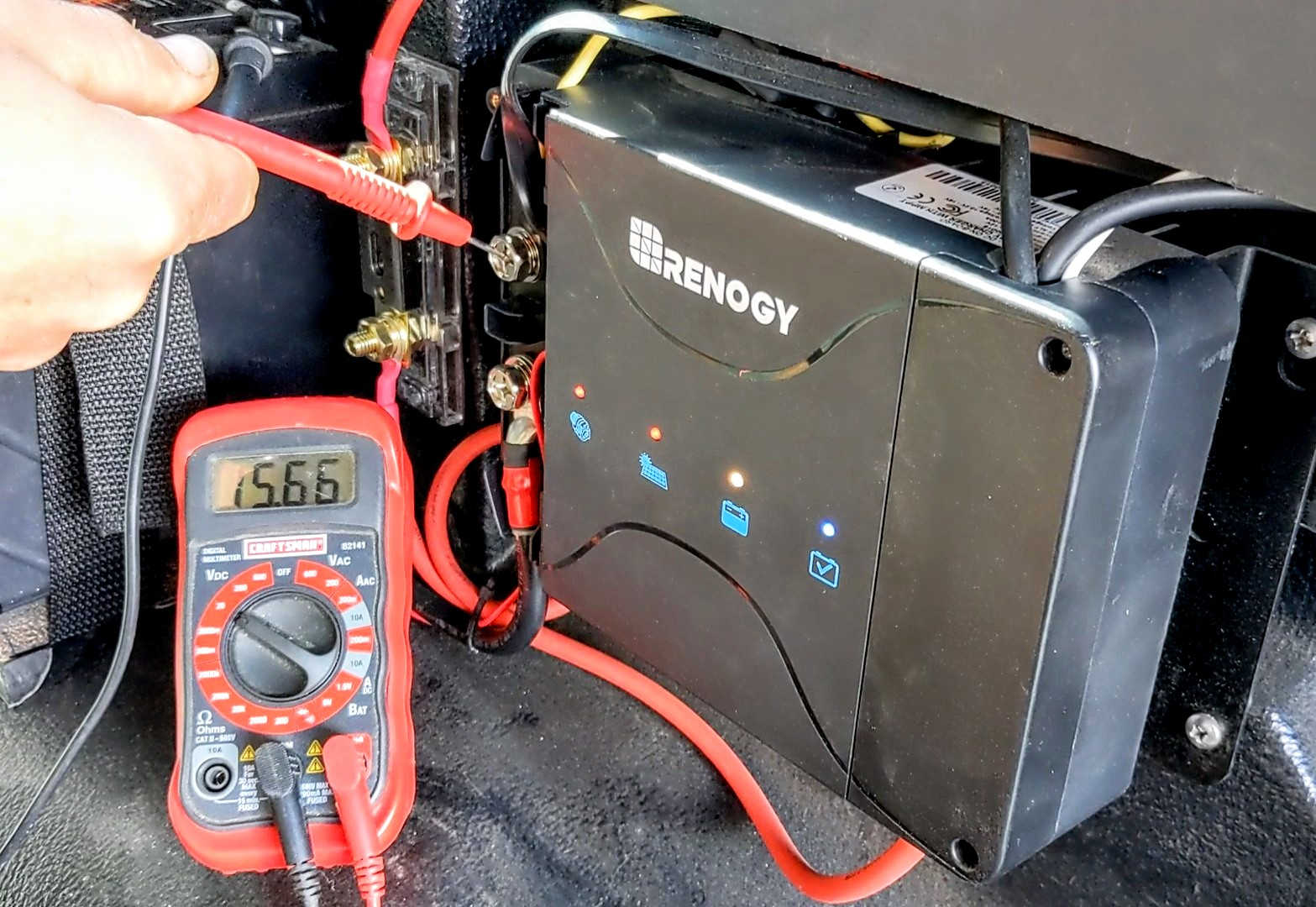
DUAL INPUT DC TO DC ON-BOARD BATTERY CHARGER WITH MPPT
The Renogy Dual Input DC to DC On-Board Battery Charger with MPPT takes the standard DC to DC charger three steps further. It accepts and regulates a charge from either (or both) your starting battery (alternator) and solar panels, acting as both battery isolator/charger and charge controller. For an extra trick, when your house/service battery is full from a solar charge, it sends a trickle charge back to your starting battery, so you are never left with a dead starting battery while you are boondocking on solar.
If your panels are illuminated and charging while driving, the max amperage is split between the 2 charging sources 50%-50%. For example, if you have the 50A model and you are driving down the road while the sun is out, and your panels are illuminated, the charger allows up to 25A from your engine and up to 25A to come from your panels (15A each for the 30A model). But, if you are driving at night (or your panels are not illuminated), the unit allows a maximum of 50A (or 30A) to be sent to your house battery. While parked at a campground without your engine running, the unit allows a maximum of 50A (or 30A) from your solar panels to be sent to your house battery.
Lastly, the Dual Input charger supports communication functions with the BT-2 Module and Renogy DC Home APP in order to set parameters or even trigger current limiting. This means that if I have a 50A model, I could program the Dual Input DC to DC Charger with MPPT to send 10A-40A (in 10A increments).
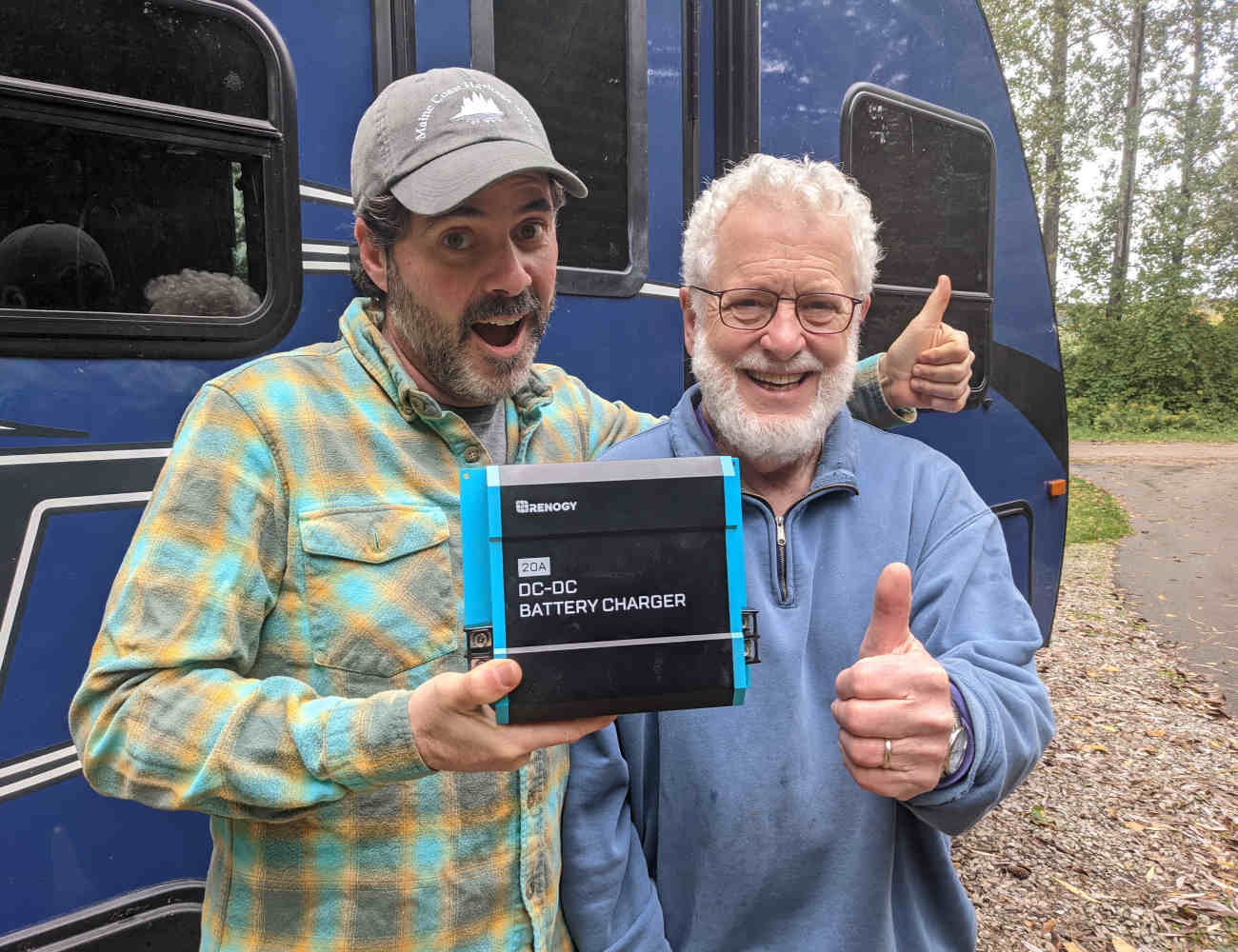
THE DUAL INPUT DC TO DC ON-BOARD BATTERY CHARGER (AVAILABLE IN 30A OR 50A) IS PERFECT, IF YOU:
- Already have (or plan to install) solar panels on your RV or van and want to take advantage of a boost in charging current coming from your alternator to charge your house battery while driving. Again, this product would replace your current charge controller, as it serves as both battery isolator/charger and charge controller for your system.
- Want to charge an auxiliary battery in your van or truck that runs a specific piece of equipment, such as a fridge, tools, etc. and possibly use a Folding Solar Suitcase without a built-in charge controller when you are not driving.
- Live or travel in a region (or season) with low sun availability, so taking advantage of an extra boost in charging current from your alternator would facilitate longer boondocking sessions, without having to add more solar panels.
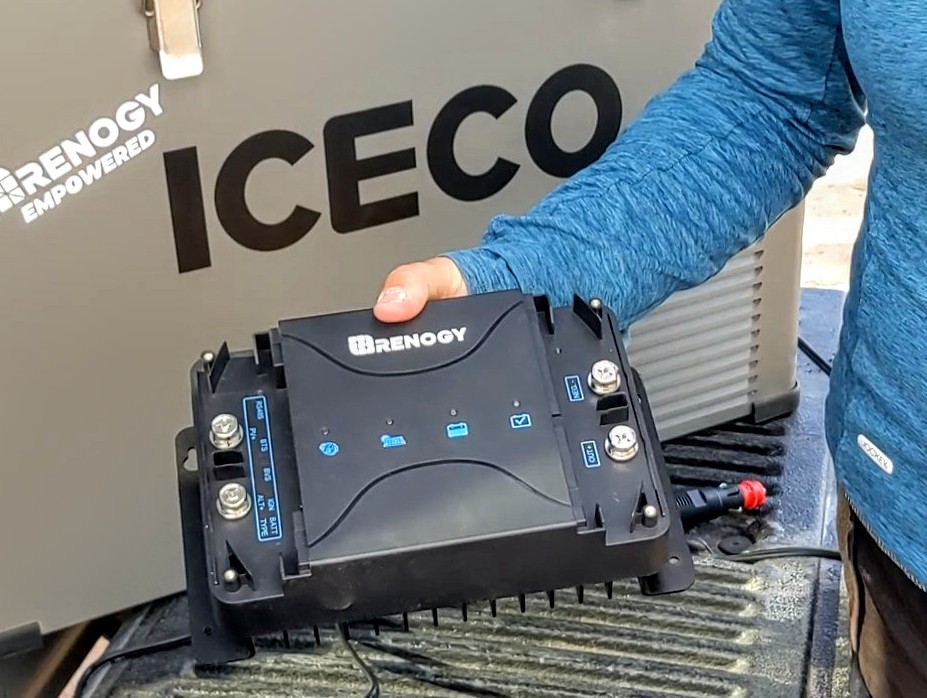
WHICH DUAL INPUT DO TO DC CHARGER IS RIGHT FOR YOUR SYSTEM?
Remember: This product serves as battery isolator and charge controller, and will replace any existing solar charge controller
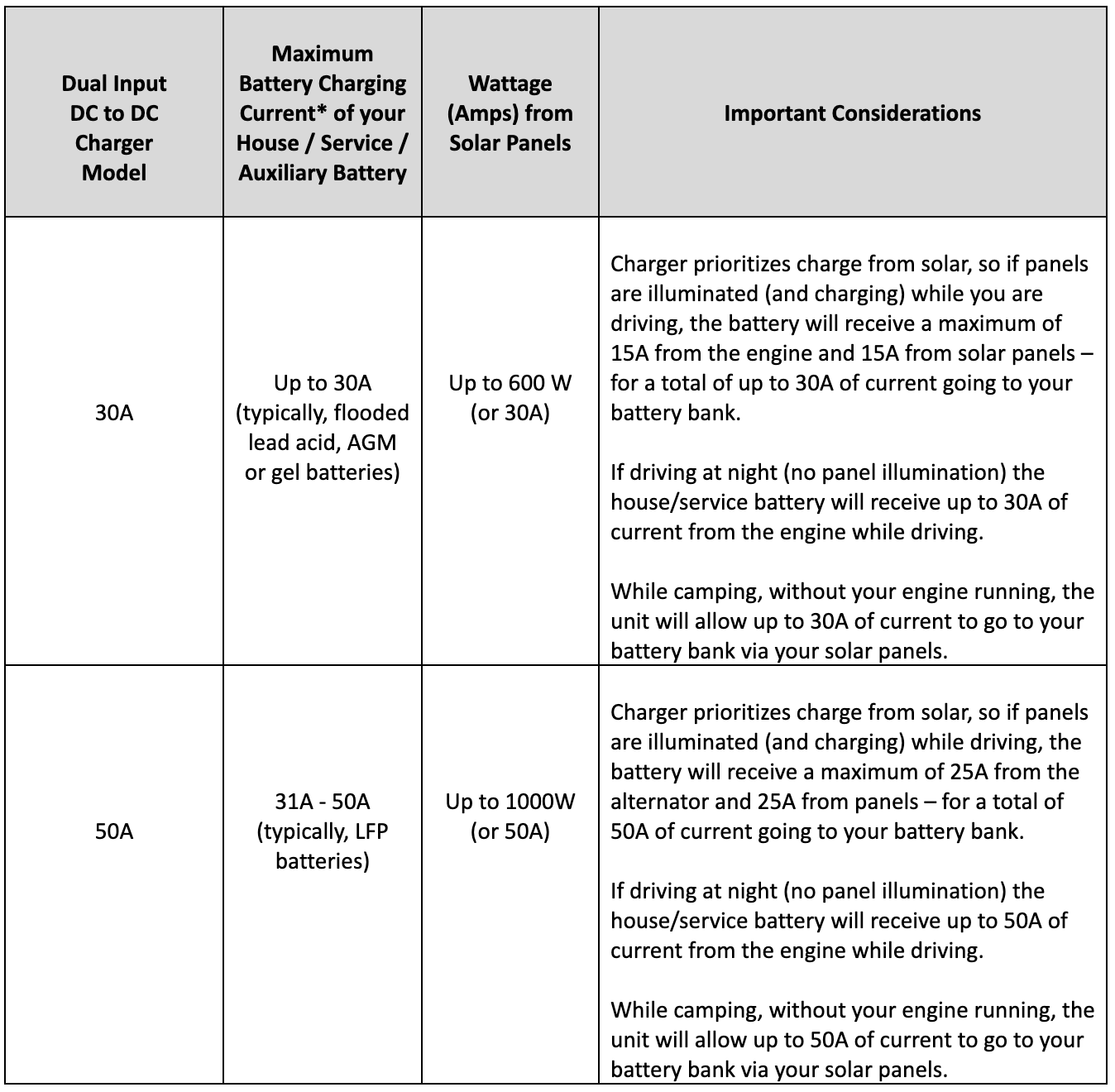
If you have theBT-2 Module paired with the Dual Input DC to DC with MPPT, you can modify the above chart to do the following through the Current Limiting Selector. This selector allows you to choose your current based on your battery and/or expand your battery bank in the future, while keeping the same Dual Input DC to DC charger.
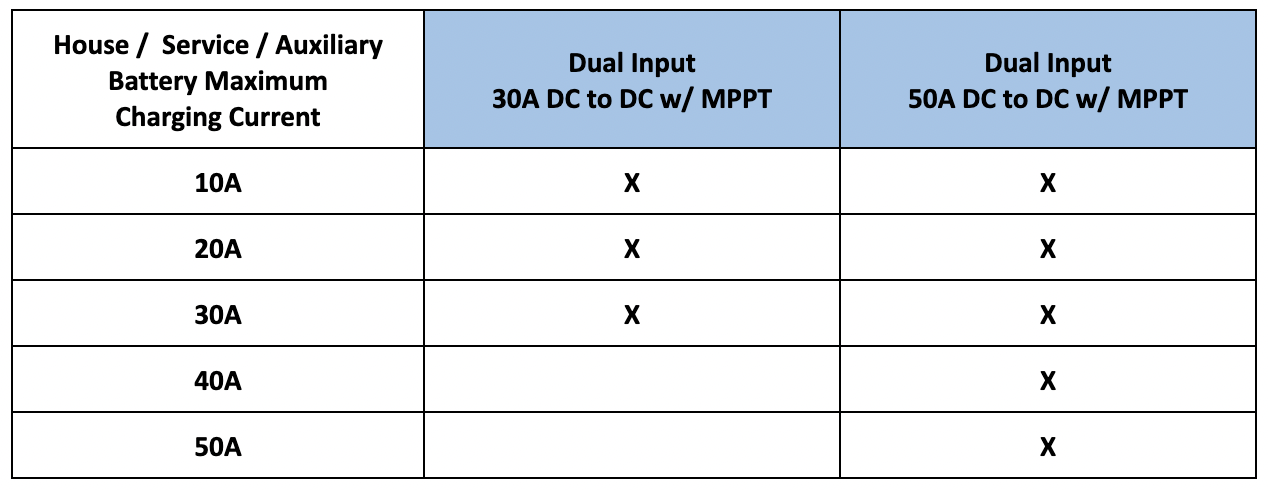
WHERE & HOW TO INSTALL A DUAL INPUT DC TO DC CHARGER
This unit is typically installed in the electronics (or battery) storage space of your RV, rather than in the towing vehicle itself. Quick connect and disconnect can be established between the vehicle and the trailer through appropriately gauged cables and Anderson Connectors. Self-contained vehicles such as motorhomes or vans can install these in an appropriate place using a hardwire connection.
We use the 30A model to charge a Renogy 50Ah LFP battery to run anICECO 12V Fridge/Freezer in the back of our 2015 Nissan Frontier towing vehicle. We have been really impressed with the performance of this charger over the last 6 months of running our 12V fridge. Check out our full installation video for ideas on how and where to put one in your rig, and our product review to see how well it has worked in this application.
Finally, if we put the standard DC to DC charger and Dual Input DC to DC Charger with MPPT in the same chart, you can easily see which charger is appropriate for your battery bank now, as well as in the future.
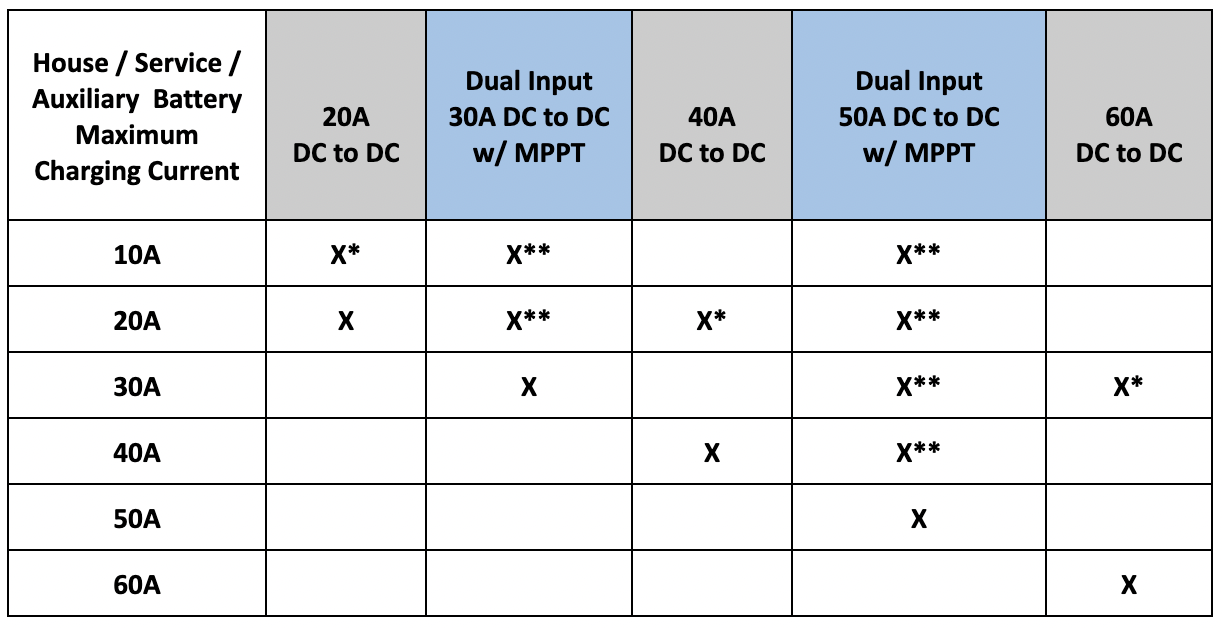
**Assumes current limiting granted by activating the LC Relay located on the DC to DC with a 12V source (like the D+ terminal)
**Assumes current limiting granted by connecting the DC to DC MPPT to a BT-2 Module and setting your maximum current on the Renogy DC Home app.
In 2012, Shari Galiardi & David Hutchison left behind careers and a comfortable home in North Carolina to travel with the vintage camper trailer they lovingly restored, outfitted with solar, and named "Hamlet." What began as a short break from careers and responsibility quickly turned into a love affair with roadlife. They have parlayed their higher education backgrounds, desire for life-long learning, and thirst for adventure travel into writing, photography, video production, and public speaking gigs from coast to coast. Known to their friends as simply Shari & Hutch, you can learn more about their full-time, solar-powered adventures on their website at freedominacan.com. Or, follow them on Facebook, Instagram, and YouTube as “Freedom in a Can, LLC.”

See other related articles at Renogy:
Solar Panels 101: A Beginner's Guide
The Ultimate Guide To DIY Off-Grid Solar Systems
Do solar panels increase home value
how efficient are solar panels
How Many Solar Panels Do I Need








